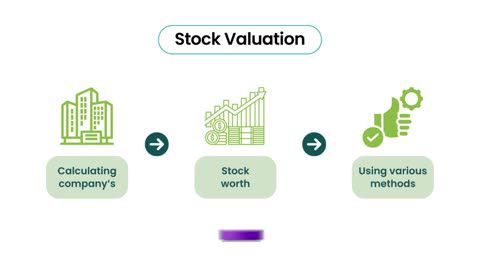Tax filing can often seem daunting, especially when it comes to understanding the various forms involved. Two critical documents in India’s tax system are Form 16 and Form 26AS. While both play a crucial role in ensuring accurate tax filing, they serve different purposes. In this article, we will explore the differences between Form 16 and Form 26AS, the importance of matching them, and how you can resolve any discrepancies to avoid tax-related issues.
Form 16 vs Form 26AS
Form 16 is a TDS certificate given by the employer to employees, while Form 26AS is a tax statement showing all TDS and TCS details from various deductors and collectors.
Introduction
What is Form 16?
Form 16 is a certificate issued by an employer to their employees. It serves as proof of the tax deducted at source (TDS) from the employee’s salary and deposited with the government. This document is essential for salaried individuals when filing their Income Tax Returns (ITR).
Key components of Form 16 include:
- Part A: Contains details about the employer, employee, TDS deductions, and the employer’s Tax Deduction and Collection Account Number (TAN).
- Part B: Includes a detailed breakup of the employee’s salary, exemptions, deductions under Chapter VI-A of the Income Tax Act, and the taxable income.
Form 16 acts as a summary of your earnings and the taxes paid during the financial year. It is typically issued annually by your employer.
What is Form 26AS?
Form 26AS is a consolidated tax statement provided by the Income Tax Department. It contains details of all tax-related transactions associated with your Permanent Account Number (PAN). This document is available on the Income Tax portal and is updated periodically.
Key details available in Form 26AS include:
- Tax deducted at source (TDS) by employers, banks, or other entities.
- Advance tax payments or self-assessment tax payments made by the taxpayer.
- Refunds issued by the Income Tax Department.
- High-value financial transactions, such as property purchases or investments.
Form 26AS acts as a comprehensive record of taxes paid and helps taxpayers cross-verify their tax deductions and income details.
Difference Between Form 16 and Form 26AS
Tax compliance is an essential aspect of financial planning, and understanding key documents like Form 16 and Form 26AS can simplify this process. While both are integral to income tax filing in India, they serve distinct purposes and provide unique insights into your financial and tax-related activities.
Form 16 is a certificate issued by your employer, detailing your salary, tax deductions, and TDS (Tax Deducted at Source) for a financial year. It acts as proof of tax paid and is crucial for filing your income tax return. On the other hand, Form 26AS is a consolidated statement issued by the Income Tax Department, providing a summary of taxes paid, TDS across various sources (salary, interest income, etc.), and advance tax. It is a comprehensive record of all tax-related transactions associated with your PAN.
| Aspect | Form 16 | Form 26AS |
|---|---|---|
| Issued By | Employer | Income Tax Department |
| Details Provided | Salary, tax deductions, and TDS for the year | Summary of taxes paid, TDS, and advance tax |
| Purpose | Proof of tax paid, essential for ITR filing | Comprehensive record of all tax transactions |
Both forms are indispensable for accurate tax filing. Leveraging financial products like loans or investment plans from trusted NBFCs such as Bajaj Finserv can complement your tax planning strategy.
Why is it Important to Match Form 16 with Form 26AS?
Matching Form 16 with Form 26AS is crucial for accurate tax filing. Here are the reasons why:
- Avoid discrepancies: Any mismatch between the two forms could lead to errors in your tax return, resulting in penalties or notices from the Income Tax Department.
- Ensure correct TDS credit: Form 26AS reflects the TDS credited to your PAN. If the tax deducted by your employer (as per Form 16) does not match Form 26AS, you may not receive the correct credit for the taxes paid.
- Streamline ITR filing: Matching these forms ensures that all income and tax details are correctly reported, simplifying the process of filing your Income Tax Return.
By ensuring consistency between these documents, you can avoid unnecessary complications and ensure compliance with tax regulations.
How to Match Form 16 with Form 26AS?
To match Form 16 with Form 26AS, follow these simple steps:
Download Form 26AS from the Income Tax portal
- Log in to the Income Tax e-filing portal.
- Navigate to ‘View Form 26AS’ under the ‘My Account’ section.
- Download the form in PDF or text format.
Compare TDS deducted by your employer
- Check the TDS details in Part A of Form 16 against the entries in Form 26AS.
- Ensure that the TDS amount and the employer’s TAN match in both forms.
Verify PAN details
- Confirm that the PAN mentioned in both forms is accurate. Any errors in PAN can lead to discrepancies.
Identify and resolve discrepancies
- If there are mismatches, reach out to your employer or the deductor to rectify errors in their TDS filings.
By following these steps, you can ensure that your tax filing process is smooth and error-free.
Reasons for Mismatch Between Form 16 and Form 26AS
Discrepancies between Form 16 and Form 26AS can occur due to several reasons, including:
- Delayed TDS deposit: If your employer delays depositing the TDS with the government, it may not reflect in Form 26AS.
- Incorrect TAN or PAN details: Errors in the employer’s TAN or your PAN can lead to mismatches.
- Non-filing of TDS returns by the employer: If your employer fails to file their TDS returns, the deductions may not appear in Form 26AS.
- Clerical errors: Mistakes in data entry, such as incorrect TDS amounts or dates, can also cause discrepancies.
It is essential to identify the root cause of the mismatch and address it promptly to avoid complications.
How to Resolve Mismatches Between Form 16 and Form 26AS
If you notice any discrepancies between Form 16 and Form 26AS, follow these steps to resolve them:
- Contact your employer
- Inform your employer about the mismatch and request them to rectify their TDS filings.
- File a correction statement
- If the error lies in the TDS returns filed by the employer, they must submit a correction statement to the Income Tax Department.
- Verify updated Form 26AS
- Once the correction is made, check your updated Form 26AS to confirm that the issue has been resolved.
- Seek professional assistance
- If the issue persists, consider consulting a tax professional or chartered accountant for guidance.
Resolving mismatches ensures that your tax returns are accurate and helps you avoid penalties or scrutiny from the Income Tax Department.
Can Form 26AS be Used Instead of Form 16?
While Form 26AS provides a comprehensive summary of your tax-related transactions, it cannot entirely replace Form 16. Here is why:
- Purpose: Form 16 is specifically designed for salaried individuals and provides a detailed breakup of salary and deductions. Form 26AS, on the other hand, consolidates all TDS and tax-related transactions linked to your PAN.
- Requirement for ITR filing: Form 16 is often required to accurately report your income and claim deductions while filing your Income Tax Return.
- Additional details: Form 16 includes salary-specific details, such as exemptions and allowances, which are not available in Form 26AS.
Both forms serve distinct purposes, and it is advisable to use them together for accurate tax filing.
Consequences of Not Fixing Differences Between Form 16 and Form 26AS
Failing to address discrepancies between Form 16 and Form 26AS can lead to several issues, including:
- Tax notices: The Income Tax Department may issue notices for mismatched tax details.
- Penalties: Errors in your tax return can attract penalties under the Income Tax Act.
- Delayed refunds: If your tax return contains discrepancies, it may delay the processing of refunds.
- Legal complications: Persistent mismatches can lead to scrutiny or legal action by tax authorities.
To avoid these consequences, it is essential to reconcile both forms before filing your Income Tax Return.
Conclusion
Understanding the differences between Form 16 and Form 26AS and ensuring they match is crucial for accurate tax filing in India. By reconciling these forms, you can avoid penalties, tax notices, and delays in refunds. If you encounter any discrepancies, take prompt action to resolve them with the help of your employer or a tax professional.
Frequently Asked Questions
Form 26AS is updated periodically, typically after the deductor files their TDS returns. Updates depend on the frequency of TDS filings, which are usually quarterly.
Form 16 is not mandatory for filing an Income Tax Return, but it simplifies the process by providing a detailed summary of your salary and tax deductions.
To download Form 26AS:
- Log in to the Income Tax e-filing portal.
- Go to ‘View Form 26AS’ under the ‘My Account’ section.
- Download the form in PDF or text format.
Related articles
Related videos
Bajaj Finserv App for All Your Financial Needs and Goals
Trusted by 50 million+ customers in India, Bajaj Finserv App is a one-stop solution for all your financial needs and goals.
You can use the Bajaj Finserv App to:
- Apply for loans online, such as Instant Personal Loan, Home Loan, Business Loan, Gold Loan, and more.
- Explore and apply for co-branded credit cards online.
- Invest in fixed deposits and mutual funds on the app.
- Choose from multiple insurance for your health, motor and even pocket insurance, from various insurance providers.
- Pay and manage your bills and recharges using the BBPS platform. Use Bajaj Pay and Bajaj Wallet for quick and simple money transfers and transactions.
- Apply for Insta EMI Card and get a pre-approved limit on the app. Explore over 1 million products on the app that can be purchased from a partner store on easy EMIs.
- Shop from over 100+ brand partners that offer a diverse range of products and services.
- Use specialised tools like EMI calculators, SIP Calculators
- Check your credit score, download loan statements and even get quick customer support—all on the app.
Download the Bajaj Finserv App today and experience the convenience of managing your finances on one app.
Download App
Now request money from your friends and family and make instant payments.

- 1. Apply for Loans: Choose from personal, business, gold loans and more
- 2. Transact: Pay utility bills, use UPI, get FASTag and more
- 3. Shop: Buy over 1 million products on No Cost EMI
- 4. Invest: Buy stocks, mutual funds and invest in FD

















